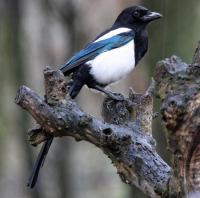- Home
- FAQs
- Customer Video Gallery
- Customer Photo Gallery
- Bird Facts
- Bird Food Blog
- Bird Information
- Feeding Advice
- Small Animal Information
- A to Z of Guinea Pigs
- A to Z of Hamsters
- A to Z of Rabbits
- Basic Care for Guinea Pigs
- Basic Care for Hamsters
- Basic Care for Rabbits
- Basic care for Chinchillas
- Basic care for Ferrets
- Basic care for Gerbils
- Basic care for Mice
- Basic care for Rats
- Buying a Healthy Small Animal
- Does your Reptile need a Licence
- Equipment for Ferrets
- Equipment for Hamsters
- Equipment for Mice
- Equipment for your Chinchilla
- Equipment for your Gerbil
- Equipment for your Guinea Pig
- Equipment for your Rabbit
- Keeping a House Rabbit
- Dog Information
- Cat Information
- Customer Information
- Fat Balls
- Suet Pellets
- Straights
- Seed Mixes
- Suet Treats
- Mealworms
- Bird Feeders
- My Account
The Breeding Season
Date: 2013-03-22 10:15:03 | Category: Bird Protection | Author: Twootz Staff
The breeding season lasts from early March to late July, and chicks are often found in a nest well into August. However, this is dependent on the weather as the timing of the breeding season is usually during their climate's spring to summer seasons, since that's when food and water are most abundant.Usually starting after the rainy season (which is early spring), so that by end of summer, their babies are raised and able to care for themselves so they can find mates and migrate with them, if they are migratory.
Warm or cold spells in spring can bring the breeding season forward or delay it by several days, dry weather in June can shorten the season and even cause starvation of late broods. The nesting season can also start up to two weeks earlier in gardens than in woodland.

The nest is built by the female and is low down in any suitable cover, such as; trees, shrubs and climbers, but nests can be found inside buildings, and occasionally even on the ground.
The nest is a substantial cup of grass, small twigs, straw and other plant material and is plastered inside with mud and lined with fine grass which can take two weeks to complete, and sometimes the same nest is used for successive broods.
Only the female broods the chicks, but both parents feed them. Chicks in gardens are fed on earthworms when they are available; woodland chicks are fed mainly on caterpillars.
The chicks are ready to fledge at 13-14 days, but if the nest is disturbed, they can leave and survive as early as nine days old. This ability to fledge early is an important anti-predator adaptation. The young birds creep and flutter from the nest, and remain in nearby cover for the following few days.
Within just one week they will have learned to fly, and by this time, begin to experiment with foods; learning by trial and error what is edible. As their skills and confidence grow, they begin to explore their parents' territory and range more widely. The young become independent three weeks after leaving the nest, and leave the natal area shortly after.
Most birds do not come back to the exact same nesting spot they used the year before, but most do come back to the same area. (And by area, I mean state). You can tell whether a bird uses his nest repeatedly over the years, depending on how he treats his nest.




